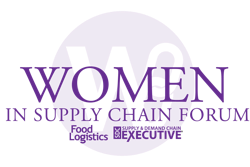
Amid all the self-paced training courses, instructional videos, and other knowledge resources that organizations make available to their supply chain employees, it would be natural to wonder whether a high-touch approach like mentoring still has a role to play in learning and development. Short answer: it does. APQC’s research has shown that mentoring can be incredibly effective if done well.
Mentoring happens all the time informally, but there are good reasons to put structure around it. Creating a formal mentoring program for supply chain helps ensure that everyone has access to these opportunities regardless of whether they’re already connected to helpful, knowledgeable people or not. A more purposeful approach to mentoring also broadens the pool of sources and recipients, allowing people to receive knowledge from the best sources—not just those who work alongside them day-to-day.
Mentoring relationships pay off with better business results. For example, we found that employees who receive peer mentoring and coaching save 1.7 hours per week because they spend less time wondering where to bring their questions or recreating work that already exists.
 APQC
APQC
This article examines the goals and benefits of four common types of mentoring relevant for supply chain:
» Transferring specific knowledge
» Providing career pathing and counseling
» Developing business acumen and soft skills
» Disseminating “insider knowledge”
Using one or more of these forms of mentoring can be an effective way to transfer critical supply chain knowledge and set up the next generation of supply chain talent for success.
4 types of peer-based mentoring
There are four common types of peer-based mentoring, each of which aims at a different purpose. Getting clear on what type of mentoring program you plan to build, why you need it, and the goals you hope to accomplish is critical for getting those most out of these relationships.
Transferring specific knowledge. Some organizations develop mentoring initiatives to facilitate the transfer of knowledge in a specific topic or functional area from one employee to another. In supply chain, for example, a senior procurement employee might teach the newest hire how to clarify purchasing requirements, negotiate and establish contracts, build deeper relationships with key suppliers, and carry out other tasks related to the role.
This form of mentoring benefits the mentee (i.e., the employee being mentored), the mentor, and the organization in several ways. Learning from subject matter experts can help the mentee decrease his or her time-to-competency, especially if the mentee is a recent graduate or new hire. This form of mentoring can also help fill specific knowledge or skills gaps related to an employee’s current role and prepare them for advancement into future roles and responsibilities. The mentor, meanwhile, gets to play the role of subject matter expert and impart his or her wisdom to a new generation of employees.
Knowledge transfer mentoring also helps the business by improving workforce and succession planning and by mitigating skills shortages across the supply chain. More fundamentally, it helps the organization avoid the loss of critical organizational knowledge by ensuring that know-how gets passed to a new generation of employees rather than going out the door when employees retire or leave.
Career pathing and counseling. Many employees prefer to approach their more experienced peers, rather than HR or a manager, for career guidance and advice. These mentors can provide newer employees with candid, objective advice on work opportunities and challenges and help them develop relationships with colleagues across the organization. As employees grow their skills toward their chosen career path, checking in with a mentor helps them make sure they are on the right track and provides an opportunity to talk through blockages and obstacles that the mentor may have experience overcoming.
This form of mentoring helps to boost employee engagement and retention. The pursuit of new opportunities for growth is one of the most common reasons why employees leave their employer. Employees who see a clear path forward in their current organization will be more likely to stay, especially with a supportive peer helping to guide them toward new opportunities. Mentors can also find it valuable to reflect on their own career histories and help to guide other employees.
Develop business acumen and soft skills. Business acumen and soft skills are among the most important and highly demanded skill sets across the supply chain. For example, respondents to APQC’s Supply Chain Planning Talent Management survey identified critical thinking (66% of respondents) and communication (53%) as the top two most important skills for future supply chain planning roles.
“Soft” or social skills are obviously applicable to a wide range of different roles. Mentors help to explain what they look like and how they add value in the context of specific supply chain roles and scenarios.
For example, communication skills mean more than just the ability to write a good email. Facilitation, including the ability to guide a conversation and work for consensus among multiple stakeholders, is just as important and perhaps even more important for success in many supply chain jobs. Watching how a mentor commands the room and leads a conversation will always be more effective and powerful than watching a series of videos on how to communicate.
Organizations that help employees develop business acumen and soft skills will benefit from higher-quality leaders, an improved working environment, and increased employee satisfaction. Mentors that can teach these skills show themselves to be valuable to the organization because they play a key role in developing up-and-coming leaders and equipping employees across the organization with valuable skills.
Disseminate insider knowledge. Important facts about an organization’s culture often go unstated unless someone is willing to spell them out explicitly. New employees, for example, may initially struggle with knowing the right person to talk to about company benefits, or where to find the right documents to carry out a specific task. On a more basic level, new employees may just need to learn “how things work around here”—in other words, where to park or not park; how to use the company intranet to ask a question; and countless other norms that structure daily life in an organization. Mentoring can take that deeply-embedded, organization-specific, and implicit knowledge and make it explicit for newer employees.
In the most common version of this type of mentoring, a new employee is assigned a ‘buddy’ who can answer any questions, show them around, and help them learn how to navigate daily life in the organization. This helps ensure that the employee knows at least one helpful person from day one, while mentors get to impart valuable wisdom to newer employees and grow their own professional networks. The organization also benefits from better cross-boundary collaboration and increased employee satisfaction and retention.
Take the next steps to build a mentoring program
Mentoring not only speeds up time-to-competency for employees who are learning the nuts and bolts of a new area but also plays an important role in helping employees establish and grow their professional networks. More fundamentally, the human connections that are forged through mentoring help employees feel more confident and satisfied in their roles, which in turn drives higher engagement, job satisfaction, and retention—all of which are especially critical during periods of disruption and ongoing changes.
If you’re ready to start a mentoring program, it’s important to begin by articulating a clear vision for how the program will benefit not only the mentee but also the mentor and the organization more broadly. Outlining specific mentee, mentor, and business goals ensures that mentoring enables employees to learn what they need to learn while satisfying the broader needs of the organization.




![Pros To Know 2026 [color]](https://img.sdcexec.com/mindful/acbm/workspaces/default/uploads/2025/08/prostoknow-2026-color.mduFvhpgMk.png?auto=format%2Ccompress&bg=fff&fill-color=fff&fit=fill&h=100&q=70&w=100)







![Pros To Know 2026 [color]](https://img.sdcexec.com/mindful/acbm/workspaces/default/uploads/2025/08/prostoknow-2026-color.mduFvhpgMk.png?ar=16%3A9&auto=format%2Ccompress&bg=fff&fill-color=fff&fit=fill&h=135&q=70&w=240)







